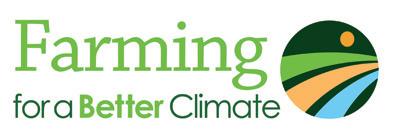
3 minute read
Farming for the Climate
“The report has identifed that even if all known methods for mitigation of carbon emissions were taken up rapidly, the industry could only deliver 19% of the aspirational carbon reduction target by 2035, highlighting the urgent need to advance technologies and develop new innovations to address this critical issue,” he says.
“Livestock farming is an integral part of UK agriculture, our landscape and food systems, but it’s a complex system involving fows of carbon, nitrogen, water and atmospheric gases.
Advertisement
“In order to help balance the reduction in emissions with the production of high-quality nutritious food, a combination of strategies is needed. These must consider all dimensions of sustainable agriculture including carbon effciency, soil health, animal health and welfare, and much more.
“And for that we need more innovation, collaboration and widespread adoption,” he adds.
Call to action
Dr Elizabeth Magowan, from the Agri-Food and Biosciences Institute (AFBI), coordinated the report, and says the intention is for it to be used as a baseline to drive change throughout the livestock supply chain.
“The report should be used by all parties in the wider supply chain and policymakers to inform debate and complement the good work already being carried out elsewhere in the sector.
“It is a call to action. While the industry is making steps in the right direction, the ambition to achieve the UK’s target is huge and known technologies and practices can only get us part of the way. The report concludes that a combination of greater investment (resources, intellectual capital and fnancial), improved carbon accounting and education resulting in adoption, are required for the UK livestock industry to achieve its net zero carbon goal within the next 30 years,” she concludes.
Do you know how much your cows are eating? By Lorna MacPherson, SAC Dairy Consultant.

With dairy cows settled on winter rations, now is the time to consider accurately measuring dry matter intakes. Measuring intakes is not common practice on many dairy farms, as this takes into account refusals which are not often weighed. However, monitoring and improving intakes can greatly impact on feed efficiency, reduce waste and increase milk output.
Feed conversion efficiency (FCE) can be calculated from milk yield (kg) divided by dry matter intake (kg), with the target being around 1.5. It varies according to stage of lactation, and will be highest in early lactation, as milk yield peaks before dry matter intake peaks. In early lactation, once maintenance requirements are met, every extra 1kg dry matter consumed, will support on average an extra 2kg of milk.
Feed space is very important, especially for newly calved cows and 1st lactation heifers. They are most susceptible to low feed intake and most negatively affected by it. A minimum 24 inches of feed space is commonly recommended but fresh cows will benefit from more, with 36 inches being optimal.


FCE is driven by forage quality, with higher NDF silages lowering FCE. To some extent, feed additives such as yeasts, plant extracts and rumen buffers can help improve FCE. Management practices can also play a huge role. Consider the following: more regular pushing up of feed, moving from once a day to twice a day feed out, proper mixing of the TMR and adequate processing of forages. All these things can help reduce wastage and encourage intakes.
Aim to feed for no more than 3 to 5% refusals for the milking herd and weigh leftovers to accurately assess dry matter intake and FCE. What is the dry matter of the TMR? If too wet, mixing and feed presentation will be poor and if too dry, spoilage and sorting may occur, reducing intakes and FCE. If the ration is greater than 45% dry matter, consider adding water to target a dry matter around 40 to 45%.
There is more information about feed budgeting at www.fas.scot along with other practical ideas about improving farm efficiencies and reducing the farm carbon footprint at www.farmingforabetterclimate.org. Find us on Facebook and Twitter @SACFarm4Climate.
Farming for a Better Climate is funded by the Scottish Government as part of Scotland’s Farm Advisory Service www.fas.scot










